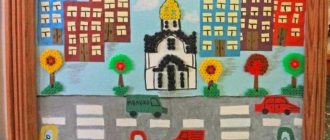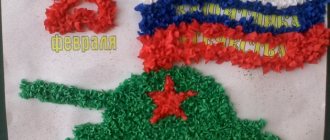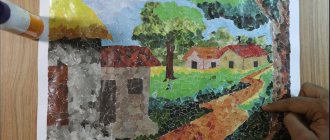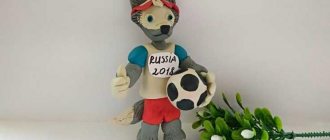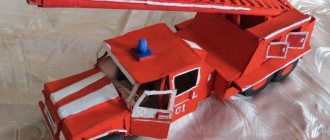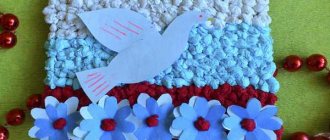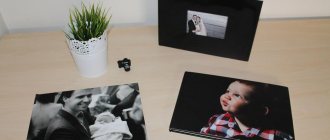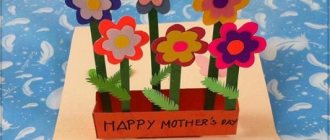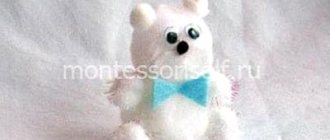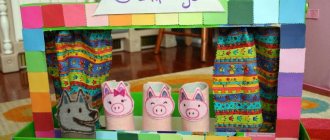Basic properties of paper for children. – Creativity Studio
My article will help reveal the basic properties of paper. As well as options, experiences and experiments with paper. Knowing the basic properties of paper, children do better crafts. After reading the article to the end, you will learn about what properties of paper you can tell your children about and how to do it.
articles
To begin, offer children paper of different textures. For example: cardboard, napkins, office paper, velvet, colored, as well as corrugated and wrapping paper.
By coming into contact with pieces of such paper, using tactile receptors, the child receives the most complete ideas. Therefore, it is advisable to have samples of different types of paper available at all times. This could be an album, a box or a card file.
And yet, despite the fact that paper is the most familiar and accessible material for children, it is necessary to familiarize them with its properties.
Invite the children to crumple up a sheet of paper of different thicknesses (napkin, notebook sheet and cardboard). Next, offer to straighten this sheet.
Conclusion: The thinner the paper, the easier it wrinkles. It is impossible to straighten the paper to its original state. You can make many interesting crafts based on crumpled pieces. (Plastic applique, trimming)
Paper can be folded
Invite children to fold the paper in half and iron the fold well. Place the product on its end and make sure that the paper can stand in this position. Bend the sheet like an accordion, ironing each fold. And make sure that the product holds its shape.
Conclusion: When folded, the paper takes on a given shape and therefore various crafts can be made based on it. Origami, kusudama balls, kirigami.
The paper is torn
Tear paper of different weights and try to repair the tear. When the children say that it is impossible to repair the break, invite them to glue the torn pieces back together.
Conclusion: It is easier to tear thin paper than thick paper. Torn pieces can be glued together. The thinner the paper, the better it sticks. Torn paper is used to make tear-off appliqué and papier-mâché.
Paper and glue
Invite children to place paper pieces on a sheet and lift the sheet vertically. Naturally the parts will fall off.
Conclusion: Making a paper product without glue is very difficult. This means that when making crafts you need to use PVA glue, paste or wallpaper glue.
Paper burning properties
An adult can show children one more property - combustion. To do this, a small sheet is set on fire over a metal or glass tray. During the observation process, children draw their own conclusions.
Conclusion: The sheet burned quickly, leaving only ashes on the tray. Consequently, paper products are highly flammable and cannot be restored. You must be careful with fire and prevent fire.
You can draw on paper
Invite the children to draw a line in red on a white sheet. And then draw the same line on red paper. And also try to draw on a napkin, glossy paper, corrugated or embossed. Ask the children what paper they liked to draw on more.
Conclusion: You can draw on paper. But if the paper is the same color as the felt-tip pen or pencil, then the drawing will not be visible. Therefore, it is better to choose paper for drawing that is white or different from the color of the pencil. If the paper is very thin, then the paper will tear when drawing. It is impossible to draw with a solid line on embossed paper.
Draw and erase
You can also try drawing on paper with a simple pencil. And then ask the children to erase what they drew with an eraser. It will be better if you draw stripes on paper with a simple pencil with different pressure.
Conclusion: If you draw on paper with a simple pencil, using light pressure, you can erase what you have drawn. This means you can make sketches on paper, erase them and draw again. Until you achieve the desired result.
Paper glasses
Give the children paper glasses with glasses made of paper. Ask the children what they see. Offer to explain this phenomenon. Next, take a sheet of paper with a drawing and apply it to the glass, ask to trace the drawing.
Conclusion: The paper is opaque. But if you shine light on it, you can see the drawing and transfer it to another sheet.
The paper gets wet
In front of the children there is a container with water and paper of different thicknesses. Suggest that you lower the pieces of paper into the water one by one, starting with the thin one. As a result of experience, children draw conclusions. Then the teacher lowers the paper boat into the container. To ensure the accuracy of the experiment, you can leave the boat in the water for a long time.
Conclusion: The thinner the paper, the faster it gets wet. This property of paper is used in the technique of working with papier-mâché paper, as well as wet folding origami. If the paper comes into partial contact with water, it does not sink and soaks longer.
What crafts can be made from paper?
Knowing the properties of paper, you can easily find a use for it. Children love to craft with this versatile material. In addition, there are a great many paper technicians. Starting from simple appliqué, you can gradually move on to origami, quilling, and modeling. You can learn more about techniques for working with paper in my article.
I wish you all creative success!
Source: https://kid-life.ru/osnovnye-svojstva-bumagi-dlya-detej/
Templates
Blanks make it easier for children to work, but they hinder their imagination. That is why they should be used only in cases where it is really necessary. You can use the printer to make toys with the symbol of the coming year or original gift boxes.
Blanks for flat applications, which you can print out or make yourself, can also be used for felt crafts. The principle of working with these materials is similar.
Types of paper - basic materials
Modern paper is in no way inferior to that made by hand by our ancestors. Although, as before, paper is made from waste paper and rags, only on a larger scale.
Paper differs not only in thickness and structure, but also in color, resistance to moisture and strength. It is impossible to count the number of types; it is constantly growing.
Of course, if you do origami , then you just have to know everything about your working material.
Before you start working, you need to decide which paper is suitable for this, take into account all the properties. One paper may be thicker, another less so; one product will hold its shape well, while the other may simply fall apart. All paper contains glue. It binds the wood fibers from which paper is made. The amount of glue content affects its strength.
Origamists use several types of paper, which are more or less suitable for making works.
1. Writing paper or printing paper.
It is of very high quality, easy to fold, and holds its shape well. Almost all writing paper consists of 90% cellulose fibers and contains no wood.
It can be made from various raw materials containing mineral fillers. There are several types of paper finishing: priming, calendering, glazing and watermarking.
Most often, in origami, they use regular printing paper, matte or glossy, of high grade.
2. Newsprint.
It is often made from recycled paper and cellulose, with the addition of filler. As the name suggests, it is intended for printing newspapers.
The fibers of this paper are weakly glued, so when wet they tear and the product loses its shape. This paper is not suitable for creating serious products, except perhaps for making samples and teaching basic folding skills.
Although, it is widely used in one-time crafts: hats, airplanes and fans.
3. Wrapping paper.
Made from a mixture of natural and recycled fibers. Intended for gift wrapping. There are many varieties of such paper: it can be thin and smooth, thick and embossed.
This type of paper is widely used in creating origami. For example, glossy is great for creating toys; it holds its shape perfectly. Self-adhesive paper is used as decoration (eyes, mouth, etc.)
d.).
4. Wallpaper paper.
It is mainly divided into two types: smooth with a pattern and embossed. This paper is only suitable for large items. I don’t recommend starting your education in the art of origami with it; it doesn’t hold the bend well.
5. Printing paper.
It is also called magazine paper. Used for printing magazines and covers, and geographic maps. This paper is distinguished by its smoothness and strength. In origami, it is used to make water toys, since it does not deform when wet.
6. Tracing paper.
Almost transparent, thin paper. It comes in several colors. Impregnated with wax and oil. Origami is widely used in making lanterns. In the kirikomi technique, it is used to make insect wings.
7. Cardboard.
Cardboard differs from other types of paper in several parameters, the main one of which is a large amount of mass per unit area. Cardboard can be single-layer or multi-layer. Cardboard is used only by professional craftsmen, since this type of paper does not allow mistakes. If you bend it in the wrong place, you won't be able to fix the job.
8. Sanitary paper.
Used in everyday life. This category includes: toilet paper, paper towels. This paper is used in the manufacture of products in which it is necessary to replicate the complex texture of leather or skin.
There are several more not very common types of paper: velvet, corrugated cardboard, drawing paper, shagreen paper, but in origami they are used very rarely or not at all.
At the initial stage, I would advise you to hone your folding skills on a more pliable paper, such as printing paper.
In addition to paper, the work will require other materials. In the Kirikomi origami technique, you cannot do without scissors. Glue will be needed to hold it together or add strength.
ps Don't be greedy, share with your Friends
